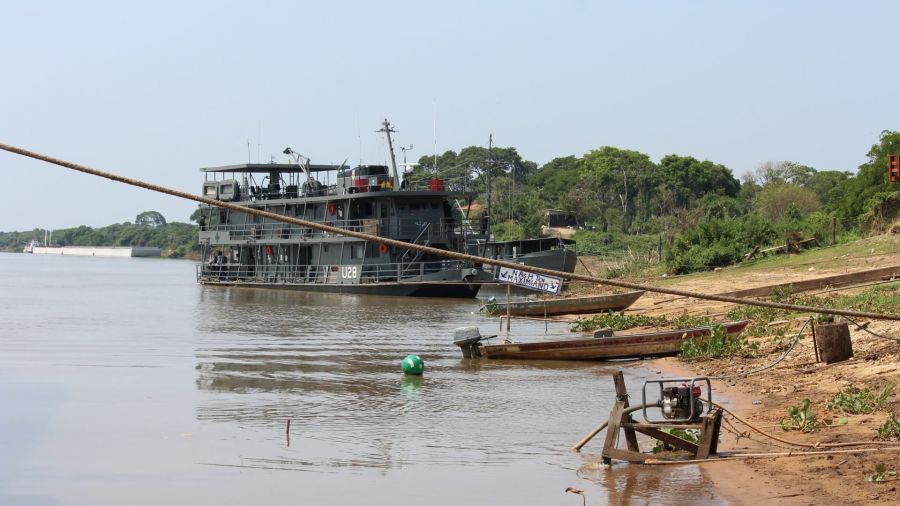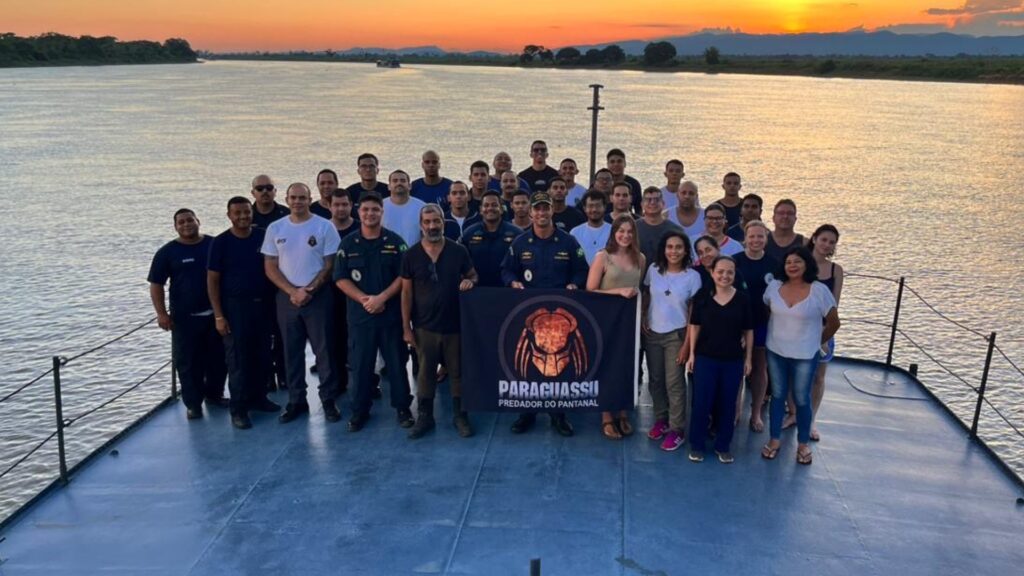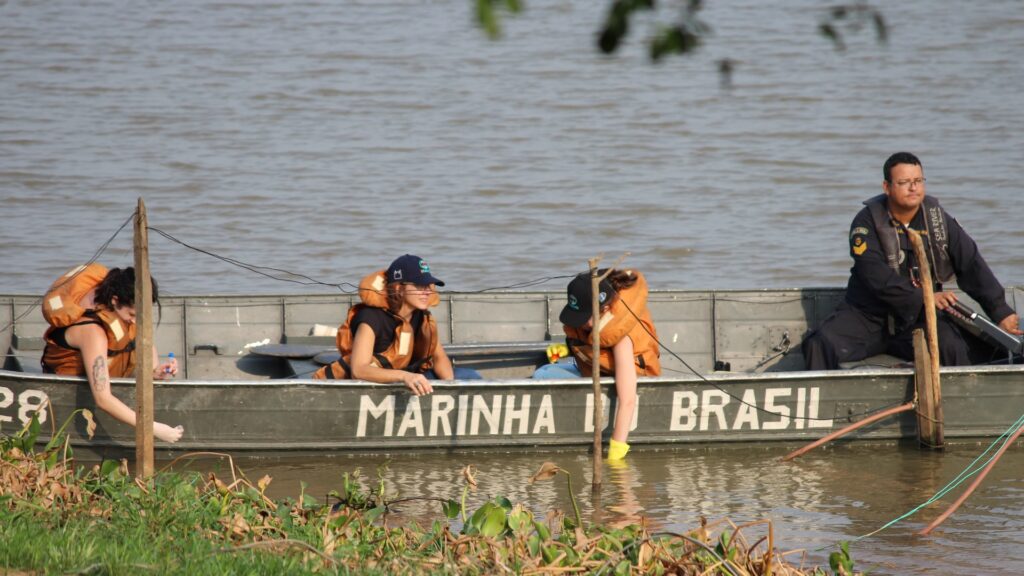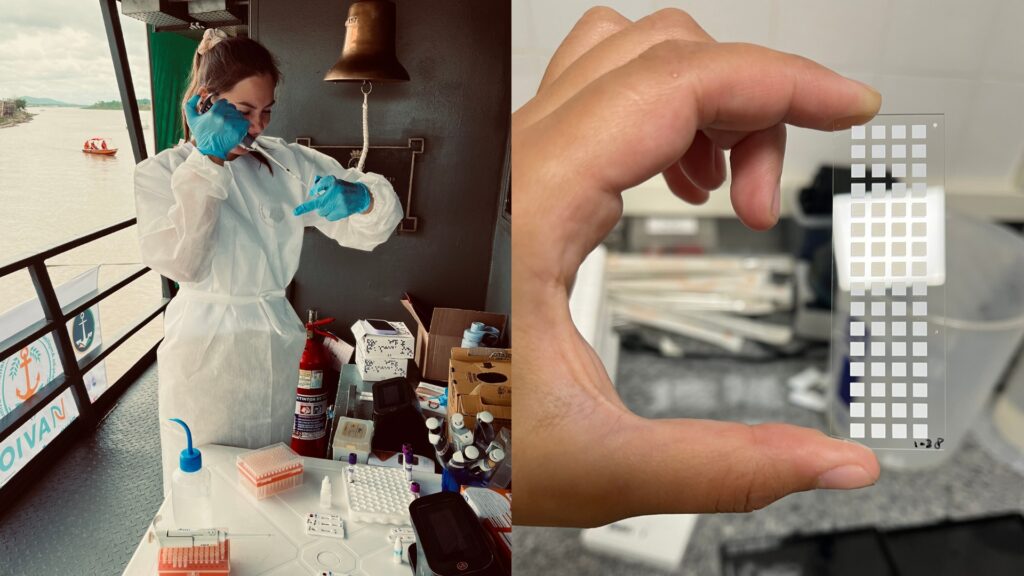Field Research in Brazil: “It’s not the lab we’re accustomed to at Erasmus MC, but it gets the job done.”

In @EuropeVEO they try to figure out how to use combinations of data from multiple sources to get better at prediction outbreak risk, by focussing on understanding the ecology. VEO is coordinated by prof. Marion Koopmans: “In VEO we work through case studies of different types of emergence pathways: zoonotic wildlife borne, vector borne, potential emergence of pathogens from permafrost, and global expansion of a (novel) human pathogen through high density and highly connected urban areas. Each of these comes with a set of drivers for which we collect data that can help understand these pathways”.
Field Research in Brazil: “It’s not the lab we’re accustomed to at Erasmus MC, but it gets the job done.”
For the research on the impact of climate change on the spread of arboviruses, researchers from the Virology department at Erasmus MC are heading to Brazil. The Pantanal, a large tropical wetland area spread across Brazil, Bolivia, and Paraguay, is well-suited for this purpose.
The research is part of the NAVIO project (Navigating for Viral Surveillance in Remote Locations), which focuses on the influence of climate change on the transmission of arboviruses. These are viruses transmitted by mosquitoes, including the dengue virus, Zika virus, yellow fever virus, and Mayaro virus. The project has just begun and will run for five years.
The Pantanal is an area where the average temperature is increasing, and there are more frequent extreme events such as severe droughts, heavy rainfall, and floods. The marshy land is also a suitable habitat for mosquitoes, suggesting a high presence of arboviruses.
“We want to know which viruses we find in that area of Brazil and whether there are differences between the various communities along the river. We then try to explain these differences,” says Louella Kasbergen, a researcher in the Virology department. “In addition, we measure and collect climate data over a long period in different seasons to investigate the influences of climate change on the spread of arboviruses. Ultimately, we also aim to assess the risk of potential outbreaks in the future.”

The NAVIO project research team, led by Luiz Carlos Junior Alcantara, a professor at the Brazilian Oswaldo Cruz Foundation (FIOCRUZ), is sailing with the Brazilian Navy. “The Marinha do Brasil has been conducting humanitarian missions since 2009 to provide basic care to remote villages along the Paraguay River,” explains Kasbergen. She joined the international research team for a few weeks last November. “We had three ships. Each ship had about ten researchers.”
Antibodies against multiple viruses
During the missions, various types of samples are examined, including mosquitoes, ticks, sewage and river water, human and animal feces, and blood from residents. “The medical personnel of the navy and the research team collect blood, and I test it for antibodies. This helps identify which viruses are circulating within a community. It’s a challenging study because there are many similar viruses in the area. This often means that people have antibodies against multiple viruses that also closely resemble each other.”

It was the research group’s first time participating, so the ships had to be equipped. Kasbergen, along with the researchers and the assistance of the navy, set up the laboratory. “It was improvisation because the ship is very narrow. We had to carry hundreds of boxes with heavy equipment, such as freezers, up and down steep stairs. All this at a temperature of 45 degrees Celsius. And you bump your head everywhere,” she says, laughing. Despite delivery problems, not all equipment arrived on time despite months of preparation. “It was a hassle, but now everything is set up. It’s not the lab we’re accustomed to at Erasmus MC, but it gets the job done.”
“We didn’t just do the blood sampling for our own research; we also wanted to provide direct healthcare to the residents.”
During this first mission, Kasbergen aimed to collect blood samples from six hundred people for her research. In the end, they managed to collect three hundred and twenty samples. “We didn’t just do the blood sampling for our own research; we also wanted to provide direct healthcare to the residents. That’s why, in addition to doctor or dentist consultations, we also conducted rapid tests for diseases such as COVID-19, syphilis, hepatitis, and malaria. This way, the people also benefited directly,” says Kasbergen.

Now that the researcher is back in Rotterdam, the analysis of the collected blood begins. “We’re already seeing interesting differences between the communities. Understanding these differences is fascinating. Why do we see what we see? Once we have all the data from the various studies over the next five years, we can draw conclusions.”
“You feel privileged”
Kasbergen hopes to return to Brazil for her second mission by the end of next year. “It was a unique experience. It’s a whole different way of conducting research, and you get an insight into the workings of the Brazilian Navy,” she says enthusiastically. “Moreover, you feel privileged. Not everyone in these villages has clean drinking water, and for more specialized healthcare, they often have to travel for days to the nearest city. Then you realize that we have everything here.”
Kasbergen’s field research is part of a collaboration between the European VEO consortium and the CLIMADE consortium – a collaboration of researchers in the northern hemisphere. Both focus on researching possibilities for new infectious disease outbreaks resulting from, among other things, climate change. Erasmus MC coordinates the VEO Consortium.
Researchers within the NAVIO project aim to understand the pathogens circulating in remote communities, as well as the complex interactions between pathogens, vectors, the environment, and the impact of climate change. By collecting data, they ultimately aim to assess the risk of spreading certain pathogens in different areas. The goal is to be better prepared for possible outbreaks of pathogens such as arboviruses.